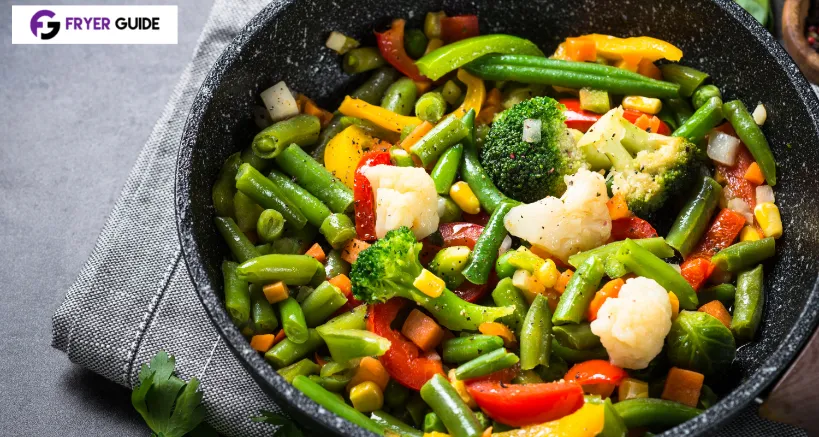I love quick weeknight meals. To make everything easier, I make a whole bunch at once and then pull it out of the freezer when I’m too busy to prep a big meal. This freezer stir fry recipe is one of my favorites – it freezes so well, and is super healthy! Plus the kids love it.
What I love about this recipe is that I can make it with any veggies I want. It’s perfect for using up some things that might go bad, accommodating picky eaters, or taking advantage of whatever’s on sale or in season.
If you’re not already on the homemade frozen dinners bandwagon now’s your chance. Frozen stir fry is one of the easiest to make!
This one also is great for all family sizes. You can easily separate it into bigger or smaller portions depending on how much everyone eats.
That’s right – you can pull it out right before cooking and run under warm water in a pinch. Or thaw the chicken in the microwave. Dinner crisis averted!
Even though this is technically a chicken stir fry freezer meal recipe, you can actually make this with anything. I’ve used chicken, pork, and beef. Or go full vegetarian!
This recipe is super simple! All you need is 4 cups of fresh vegetables (your choice), 2 large chicken breasts, and 1 batch of marinade.
If you use my homemade marinade (and I highly recommend it!), you’ll also need soy sauce, brown sugar, sesame oil, sesame seeds, ginger root, garlic, chicken or vegetable broth, and cornstarch. For a bit of heat, hot sauce can be added, but it’s optional.
Once vegetables are completely cool and well drained, toss together gently with your hands. Divide into meal-sized portions suitable for your family (I weighed mine into 1 lb portions) and pack into heavy-duty freezer bags. Press as much air out as possible and seal.

To cook your freezer stir fry:
Remove the frozen chicken and the marinade from the bag and allow them to thaw completely.
In a wok or large skillet, heat up a bit of oil. Then stir fry the meat for a few minutes until it’s cooked through.
Add in the frozen veggies and the marinade, and cook on high, stirring frequently. Heat until the vegetables are heated through and the meat is no longer pink in the center, about 3-5 minutes.
Serve on its own or with a side of rice.
How to Make Freezer Stir Fry
First, wash and prepare your vegetables by chopping them into bite-sized pieces.
Blanch the veggies in a pot of generously salted water.
Once they’re done cooking, remove the blanched vegetables from the water with a slotted spoon or fine strainer.
Spread out the veggies on a cookie sheet lined with parchment paper and let them cool completely.
Once they’re cool, place the vegetable trays in the freezer for 2-3 hours or until they’re frozen solid.
Remove them from the freezer and break up the frozen veggies with your hands. Place in a gallon-sized freezer-safe bag.
If you haven’t already, prepare the marinade by whisking together soy sauce, brown sugar, sesame oil, sesame seeds, peeled and minced ginger root, minced garlic, hot sauce (optional), chicken or vegetable broth, and cornstarch.
Chop up the chicken breasts (or meat of your choice) into bite-sized pieces.
Place the meat, along with 3-4 tablespoons of marinade, in a sandwich-sized bag. Seal the bag up and place it inside your gallon size bag with the frozen veggies.
Pour the remaining marinade in a sandwich-sized bag and place it in the gallon-sized bag with chicken and veggies. Remove as much air as you can and seal the bag. Put the bag back in the freezer until you’re ready to cook your stir fry.
Avoid the Frozen Taste! How To Cook Frozen Vegetables | Black Hack
FAQ
Can I freeze cooked stir fry vegetables?
Can you freeze cooked mixed vegetables?
Can you reheat stir fry from frozen?
How do you stir fry frozen vegetables without getting soggy?
